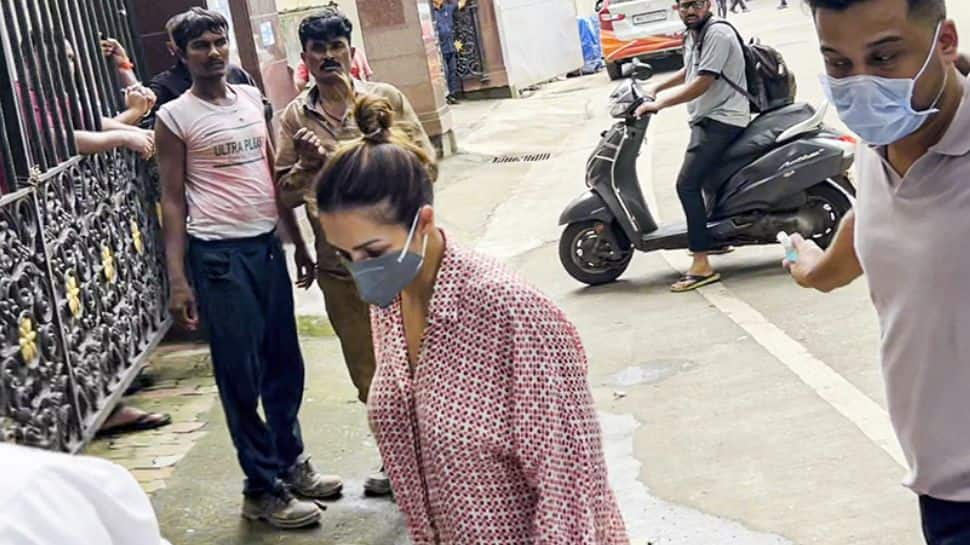The Bollywood fraternity was in for a rude shock on Wednesday when actress Malaika Arora’s father Anil Mehta allegedly died by suicide, jumping off the terrace of his Mumbai residence, police said on Wednesday. Anil Mehta was 62 when he allegedly died by suicide, the cause of which is still unknown. While investigations are underway to probe all possible angles, the incident once again raises questions about the mental health of senior citizens. According to multiple media reports, sources claimed that before the tragic incident, Anil Mehta had reportedly told his daughters Malaika and Amrita over the phone that he was “sick and tired”.
Dr Gorav Gupta, CEO & Senior Psychiatrist, Tulasi Healthcare, Gurugram, comments, “The recent tragic suicide of Malaika Arora’s father has brought to light the often overlooked issue of suicide among the elderly. This distressing event has underlined the need to understand the key causes, identify the warning signs and implement effective prevention strategies for this vulnerable population.”
Main causes of suicide among the elderly
Dr Gorav Gupta mentions the key causes that make the elderly vulnerable and desperate and in extreme cases, lead them to suicide.
1. Chronic illness and pain: Many older people suffer from chronic illnesses, such as heart disease, cancer and arthritis. Persistent pain and the inability to perform everyday activities can lead to feelings of hopelessness and despair.
2. Mental health disorders: Depression is a major risk factor for suicide in older people. Unfortunately, it is often underdiagnosed and undertreated in this age group. Other mental health issues, such as anxiety and dementia, also contribute to suicidal thoughts.
3. Social isolation and loneliness: Older people are more likely to experience social isolation due to the loss of a spouse, family member or friend. Loneliness can exacerbate feelings of worthlessness and hopelessness.
4. Loss of independence: The inability to live independently, whether due to physical or cognitive impairment, can lead to a sense of helplessness and loss of dignity, increasing the risk of suicide.
5. Financial stress: Financial hardship, including inadequate pensions and rising health care costs, can cause significant stress and anxiety, which may lead to suicidal thoughts.
Also Read: Malaika Arora’s father’s last rites: Kareena, Saif Ali Khan, Arjun Kapoor and other celebs attend funeral
Suicide: How to identify the warning signs
While the pattern of behavior may vary from one individual to another, some key warning signs, according to Dr. Gorav Gupta, include:
1. Changes in behavior: Noticeable changes in daily routines, such as neglecting personal hygiene, changes in sleep patterns, or withdrawing from social activities, can be warning signs.
2. Verbal signals: Expressions of hopelessness, talk of being a burden, or discussing death and suicide should be taken seriously.
3. Increased substance use: An increase in alcohol or drug use may indicate underlying mental health problems and suicidal ideation.
4. Giving away possessions: If an elderly person begins giving away valuable possessions or making unusual preparations for their death, it could be a sign that they are contemplating something drastic.
5. Sudden improvement in mood: A sudden and unexplained improvement in mood after a period of depression may indicate that the person has decided to take some decisive but harmful action.
Measures to prevent suicide
While loved ones are often caught off guard in cases of suicide, Dr. Gupta provides the following tips that can potentially reduce the chances of suicide:
1. Foster social connections: Encourage regular interaction with family, friends, and community groups. Social support can significantly reduce feelings of isolation and loneliness.
2. Ensure access to mental health care: Regular mental health screenings and access to appropriate treatment, including therapy and medication, are crucial to managing depression and other mental health disorders.
3. Control chronic diseases: Proper management of chronic diseases and pain can improve quality of life and reduce the risk of depression and suicide.
4. Foster a sense of purpose: Involve older adults in activities that provide a sense of purpose, such as volunteering, hobbies, or community involvement.
5. Monitor and restrict access to the media: If there is a risk of suicide, make sure that dangerous items, such as firearms or large amounts of medications, are not easily accessible.
6. Encourage open communication: Create an environment where older people feel comfortable talking about their feelings and concerns without fear of judgment.
“By understanding the key causes, identifying warning signs and implementing preventative measures, we can work to reduce the incidence of suicide among older adults and ensure they receive the care and support they need to lead fulfilling lives,” says Dr. Gupta.
Disclaimer:
The information contained in this post is for general information purposes only. We make no representations or warranties of any kind, express or implied, about the completeness, accuracy, reliability, suitability or availability with respect to the website or the information, products, services, or related graphics contained on the post for any purpose.
We respect the intellectual property rights of content creators. If you are the owner of any material featured on our website and have concerns about its use, please contact us. We are committed to addressing any copyright issues promptly and will remove any material within 2 days of receiving a request from the rightful owner.

